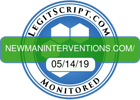Family life in the United States is changing, and many two-parent households are on the decline. In 1960, 73% of homes consisted of two parents in their first marriage, and in 2014 this decreased to 46% of families. In 2014, 15% of families were two parents in re-marriage, 7% were cohabiting parents, 26% were single parents, and 5% of children had no parents, per a Pew Research Center regarding Social and Demographic Trends. Because of these many changes, there is no longer one dominant family form, but rather many evolving family forms. Not only has the diversity of the family living arrangements increased, but so has the fluidity of the family. Drug and alcohol Intervention programs are a very therapeutic process in putting a family, that has been ripped apart but substance abuse, back together
The Need for Drug and Alcohol Intervention Programs
Statistically, within the United States over a three-year period, about one in three children or 31% of children younger than six experience significant changes within their family. These changes are within the family or household structure in the form of parental divorce, separation, marriage, cohabitation, or death. Regardless of the family structure and dynamic, substance abuse is devastating and rips families apart. Families that are struggling with a loved one addicted to drugs or alcohol witness the entire family dynamic fall apart slowly. However, through drug and alcohol intervention, the family begins the healing process. Substance abuse intervention gives the family the opportunity to regain control and save the life of their loved one.
The Impact of Substance Abuse on Families
Substance abuse has a distinct effect on the family structure. When family members abuse substances, negativism occurs, which is any negative communication that occurs among family members. For example, this takes the form of complaints, criticism, and other expressions of displeasure. Family members within these circumstances create a crisis to get attention. Parental inconsistency also occurs, such as setting erratic rules, inconsistent enforcement, and an inadequate family structure. Children become confused and cannot figure out the boundaries of what is right or wrong. Parents who are using drugs are in denial or are in denial of their children abusing drugs, despite visible warning signs.
Parents have also have miscarried expressions of anger, along with having unrealistic parental expectations. Along with this, either a parent or child will self-medicate and use drugs or alcohol to cope with a difficult situation. Parents and or children will begin to resent their emotionally deprived home, and children will tend to excuse themselves from all further expectations. The person addicted to drugs or alcohol has created a rift within the family dynamic. Healing the family dynamic involves almost restructuring the entire family system. The process includes improving the relationship between parents and the relationship between parents and children. Part of the responsibilities of a professional interventionist is beginning this healing process, which ensures the success of the intervention.
What happens next after an intervention?
An essential aspect of the intervention process is education and bringing old arguments to light. The people involved with the intervention are members of the family who will not become antagonistic or create turmoil. However, the job of the interventionist is to counsel the family, bring them together, and plan for the intervention. Once the intervention is successful, the counseling process does not stop there. There is much the family must do while their loved one is in treatment. A drug and alcohol intervention is the first step, but while the drug user is in treatment, they may still attempt to leave. A certified interventionist continues to coach the family, provide support, and assists the family when their loved one wants to leave treatment.
The first few weeks during rehabilitation is difficult; the drug user is going through a roller-coaster of emotions. The reality of never using drugs or alcohol again is sinking in, along with realizing there are no other options besides treatment. These new realities do create the will and desire for a drug user to leave treatment and manipulate the family to accomplish this. However, through the preparation and support of the interventionist, the family is prepared and knows how to cope and manage these issues when they arise. Along with the help of the treatment program, the family can travel this road and have confidence knowing they are getting the treatment they need.
The Benefits of Family Counseling and the role of the Interventionist.
Family counseling produces a better understanding of healthy boundaries and family patterns of dynamics, along with enhanced communication. Additionally, family counseling improves problem-solving, more profound empathy, and reduces conflict while improving better anger management skills. While the drug user is attending treatment, it becomes the ideal time for the family to participate in counseling. Most substance abuse treatment programs offer family counseling or refer a family to a family therapist. Healing the family dynamic takes time, and while your loved one receives the treatment it becomes the ideal time to repair the family structure.
Before your loved one leaves treatment, they will have a new outlook on life, and the strong support of the family to aid in maintaining their sobriety. Before drug and alcohol intervention programs take place, a professional interventionist should outline a plan that will carry the family all the way through treatment of the addict and onto a life of successful recovery. Many drug and alcohol intervention professionals have case management and sober coach resources available to the family. If you need guidance in this area, please fill out the form or call the hotline number for help.
Sources Cited:
https://www.pewsocialtrends.org/2015/12/17/1-the-american-family-today/
https://www.ncbi.nlm.nih.gov/books/NBK64258/


